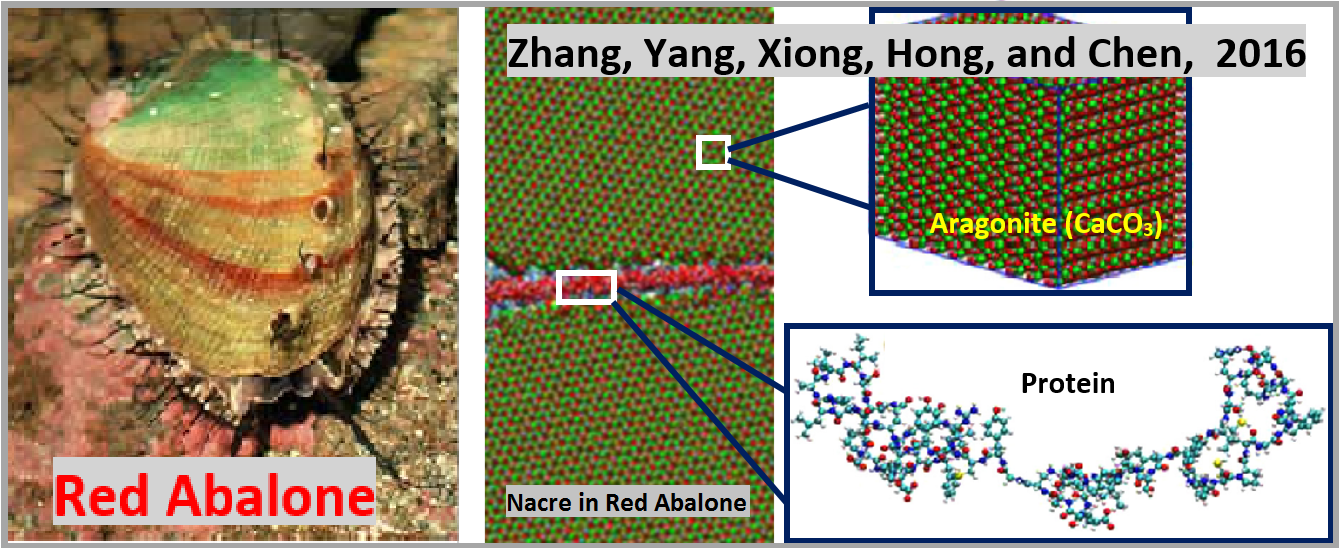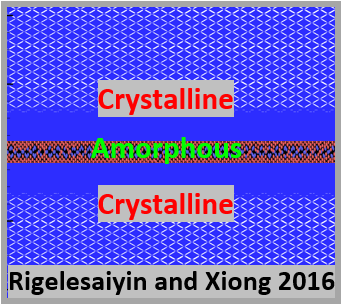Research Areas:
Link Atomistic to Continuum
[Read more...]
CG Simulation of Dislocations
[Read more...]
Multiscale Thermal Transport
[Read more...]
Dislocation-Interface Interactions
[Read more...]
Bio-inspired Composites
Materials under Irradiations
[Read more...]
Brittle-to-Ductile Fracture
[Read more...]
High-pressure Phase Transitions
[Read more...]
Nanostructured Ceramics
[Read more...]


Biological materials have attracted widespread interests because of their exceptional properties such as lightweight, high strength, high toughness, and high stiffness. For example, a combination of 95 wt% crystalline aragonite and 5 wt% protein in nacre of red abalone leads to several orders of improvement in fracture toughness than pure aragonite. Another widely used biological material, wood, also exhibits a remarkable combination of low density, high stiffness and high strength due to the multilayered structure in wood cell walls, which contain three components: crystalline cellulose microfibrils, amorphous hemicellulose, and lignin. Recent atomistic simulation implies that the amorphous/crystalline multilayered structure may play a key role in determining the superior properties of nacre and wood (figures as shown above).
The systematic study of the interrelationship between chemical compositions, microstructures, and properties of biological materials provides a preliminary guidance to fabricate high-performance bio-inspired nanocomposites. For example, it was found that an exceptional tensile ductility in metallic nanolaminates, which are composed of multilayered crystalline copper and amorphous copper-zirconium glass, can be achieved, although the incorporation of metallic glasses into engineering materials is often accompanied by complete brittleness. In our group, we recently constructed concurrent atomistic-continuum models to study the relationship between the property and the microstructure, which spans from the atomic-scale short-range-order within amorphous layers to the microscale long-range-order within crystalline layers, in such bio-inspired material systems (figures and movie as shown below).

References:
- Zhang, N., Yang, S., Xiong, L., Hong, Y., and Chen, Y., 2016. Nanoscale toughening mechanism of nacre tablet, Journal of the Mechanical Behavior of Biomedical Materials, 53, 200-209. doi:10.1016/j.jmbbm.2015.08.020
- Zhang, N., Li, S., Xiong, L., Hong, Y., and Chen, Y., 2015. Cellulose-hemicellulose interaction in wood secondary cell-wall, Modeling and Simulation in Materials and Engineering, 23 (8), 085010. http://dx.doi.org/10.1088/0965-0393/23/8/085010
